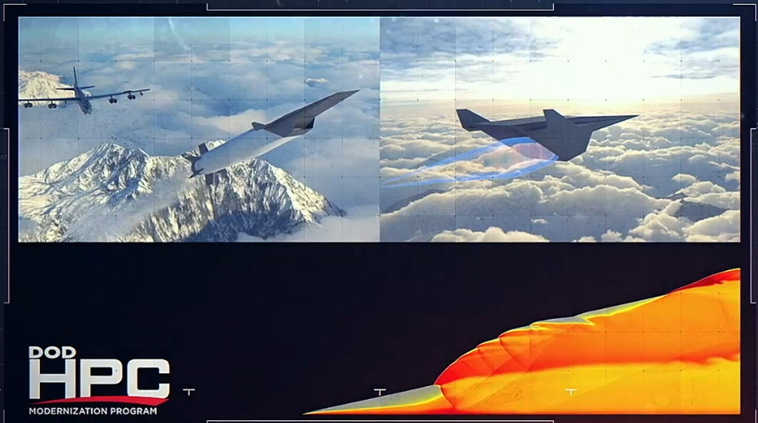Hypersonic flight presents many engineering challenges that drive current research and development. One is that air may move so fast that there is not enough time for fuel to mix with the air or for the fuel to burn completely before leaving the combustor. Some less-than-ideal solutions include building longer engines or wasting fuel by not burning it, so the US Navy is considering other possibilities for hypersonic flight.
HPCMP has supported the Naval Center for Space Technology in studying a design known as the oblique detonation wave engine (ODWE). The principle behind ODWE is to use the high-speed air flow present in hypersonic flight to initiate and stabilize a detonation wave. This would require fuel injection ahead of the combustor followed by a triggered wave that moves forward at the same speed as the air flowing through the engine. This would produce almost instantaneous fuel combustion. If ODWE becomes a reality, it would enable close-to-maximum efficiency and allow for a short combustor length. HPCMP has enabled high-fidelity modeling of stable oblique detonation waves to understand the initiation, stabilization, and overall dynamics of these types of systems.

